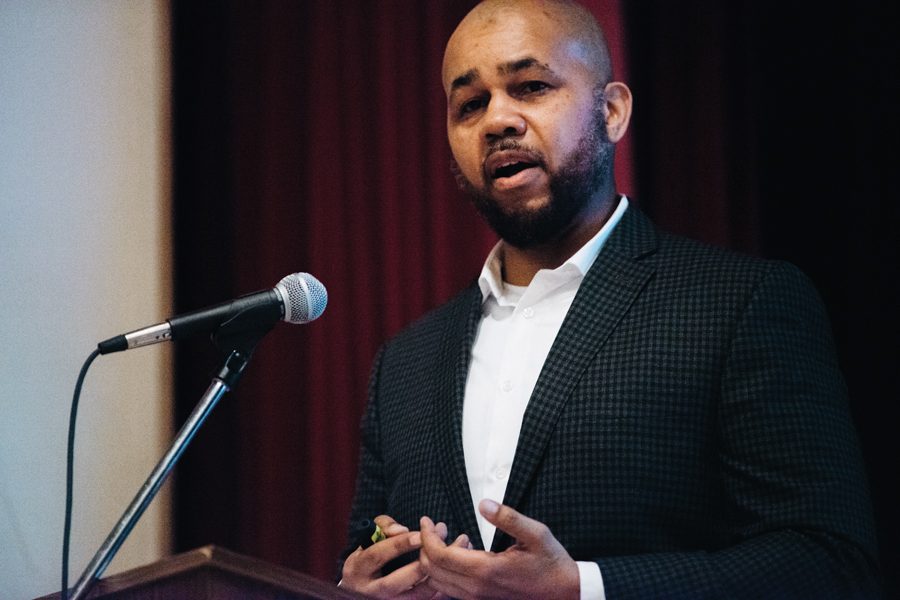Authors evaluate racial inequities in schools, address District 65 community members
Noah Frick-Alofs/Daily Senior Staffer
Author John Diamond speaks at Nichols Middle School. He and Amanda Lewis presented to District 65 community members about racial inequality in school districts.
March 7, 2018
Authors and professors Amanda Lewis and John Diamond evaluated the causes of persistent racial inequality in school districts like Evanston/Skokie School District 65 in front of an audience of parents and community members Tuesday night.
More than 100 people joined Lewis and Diamond at Nichols Middle School for an event organized by District 65, four parent-teacher associations from schools throughout the district and the Organization for Positive Action and Leadership — an Evanston advocacy group focused on racial equity. The speakers presented the research from their recent book and took questions and audience comments.
Lewis, a professor at University of Illinois-Chicago, and Diamond, a University of Wisconsin-Madison professor, recently co-authored a book titled “Despite the Best Intentions: How Racial Inequality Thrives in Good Schools,” focusing on a high school renamed “Riverview” for confidentiality. They conducted 200 interviews for their project about racial dynamics in school districts.
“(Discrimination) is subtle. It’s often unintentional but it is consequential,” Lewis said. “These kinds of pervasive racial dynamics are often hard to address in part because of how people make sense of race. The claim that race is pasé, that it’s old news, does harm because it prevents us from understanding how race does matter.”
Diamond highlighted two dynamics in high-achieving schools that contribute to inequality: opportunity hoarding, when dominant groups monopolize resources, and organizational routines, when repetitive patterns of action make it difficult to facilitate change in classrooms.
Diamond said white parents play a key role in closing the gap between white students and students of color. He said districts spend an “inordinate” amount of time trying to reassure white parents concerned for their high-achieving students.
“We often fix our gaze on black and Latino parents and not what white folks are doing to create the situation,” Diamond said. “Whenever there’s a change to make equity, there’s always a resistance.”
After Diamond spoke, Lewis added that white parents often have good intentions but end up exacerbating inequality rather than advocating for change. She asked parents who hold diversity as a value: “How much do you really mean it?”
Lewis said researchers understand education as a public good, but in practice, parents often want the best thing for their own children. Parents make choices everyday that either feed into or relieve inequity in the community, she said.
“Each and every one of us that engages with schools need to think about what our engagement is,” Lewis said. “Who are we advocating for? Are we advocating just for our own kids, or are we advocating for all kids?”
Diamond praised District 65 for making an addition to the curriculum to provide more support for students entering high school math. He said the district was open to “creatively restructuring,” and he said it would make a difference.
District 65 school board president Suni Kartha attended the event and said she was happy to hear the speakers feel the district is moving in the right direction. However, she said the district would have to constantly examine their practices.
“I saw a room full of people that I believe are allies in this work,” Kartha said. “We are going to get resistance — we’ve already started to get resistance — and knowing that these are people that I can call upon to help fight that is always good to see.”
Email: [email protected]
Twitter: @caity_henderson


